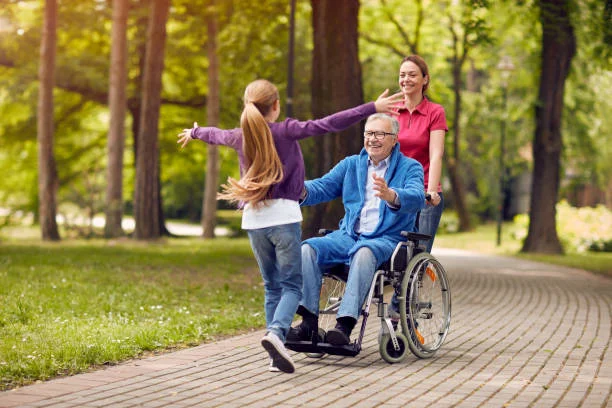Key Takeaways:
- Recognizing the signs that it’s time for assisted living can prevent accidents, loneliness, and caregiver burnout.
- Physical health issues, cognitive decline, and neglect of personal hygiene are among the most common indicators for additional support.
- Emotional withdrawal and frequent hospital visits can also signal that independent living is no longer safe.
- Early conversations about assisted living help preserve dignity, reduce stress, and create smoother transitions.
- Choosing a supportive and well-equipped community ensures your loved one receives the care, connection, and comfort they deserve.
Discover our latest featured post – where insights meet inspiration today!
Introduction
Determining the appropriate moment to transition a loved one to assisted living can be one of the most personal and difficult choices families face. Many families want to honor their loved ones’ desire to age independently, yet safety, health, and emotional well-being often become greater priorities. The realization that a family member may no longer be able to live safely on their own can bring feelings of guilt, fear, and uncertainty, making this decision emotionally taxing. Recognizing the key indicators of when assisted living is needed can ease this process, ensuring peace of mind for both the family and the individual. By proactively exploring supportive options, such as a trusted Suffolk County senior living community, families can find a comforting and secure environment capable of meeting their loved one’s changing needs.
This guide highlights various physical, cognitive, and emotional changes that may indicate when a higher level of care is required. Acknowledging these signs early allows for open, respectful conversations with your loved one and empowers them to take an active role in decisions about their care. Recognizing the right time for assisted living is not just about extending life. It is just as much about enhancing its quality, allowing older adults to enjoy life’s moments with dignity, comfort, and compassionate support.
Physical Health Decline
One of the most apparent indicators that assisted living might be needed is a decline in physical health, compromising an individual’s ability to manage daily responsibilities. For some seniors, aging can bring about frailty and reduced strength, while for others, chronic illnesses such as arthritis or heart disease can significantly affect their independence. Families may notice several telling issues, including:
- Frequent Falls or Accidents: An increased number of falls often points to balance troubles, weaker coordination, or underlying medical conditions impacting mobility. A single fall can have serious consequences for an older adult, both physically and emotionally, raising the risk of complications like fractures. Even near-misses—when a fall is narrowly avoided—should be discussed openly with primary care providers, as they are important warning signs.
- Difficulty with Daily Living Activities: Struggles with essential tasks like bathing, grooming, using the restroom, dressing, and preparing meals can signal that physical independence is waning. Missed medication doses, skipped showers, and forgotten chores often present early signs that daily routines are becoming too challenging.
- Noticeable Weight Loss or Poor Nutrition: Older adults facing trouble preparing meals or remembering to eat are at risk for nutritional deficiencies and unintentional weight loss. This can lead to weakened immune function, muscle loss, and increased vulnerability to illness. Sudden changes in eating habits or a consistently empty refrigerator can be red flags for caregivers that their loved one’s health is being compromised.
Cognitive Decline
Cognitive challenges frequently make it difficult for older adults to live safely and independently. Problems with memory, reasoning, and judgment can jeopardize both safety and day-to-day management of essential tasks such as financial responsibilities or medication adherence. Families should watch for warning signs like growing forgetfulness missing bill payments, misplacing important items, or asking the same questions repeatedly which may signal early stages of dementia or Alzheimer’s disease. Episodes of confusion and disorientation, such as getting lost on familiar routes or mixing up dates and times, are also serious concerns.
- Memory Loss: Frequently losing personal belongings, forgetting appointments, or recalling familiar faces and names can signal potential cognitive impairment. Difficulty following conversations or completing once-familiar tasks, like cooking a favorite recipe, may also become evident.
- Confusion and Disorientation: Accidentally wandering away from home or experiencing confusion when navigating well-known environments can indicate diminished cognitive function. Some seniors might struggle with time management or lose track of the current day or season, creating additional safety risks.
- Increased Anxiety or Agitation: Noticeable and abrupt mood swings, heightened anxiety, or readily triggered agitation may be linked to underlying neurological changes. Trouble finding the right words, losing interest in conversations, and lashing out unexpectedly can indicate that cognitive changes affect an individual’s sense of security and emotional regulation.
Neglect of Personal Hygiene and Home Maintenance
As the ability to care for oneself declines, changes in personal appearance or living conditions often become more noticeable. Neglected personal hygiene and an untidy or unsafe home environment can indicate that the individual struggles to keep up. Some key warning signs include:
- Neglected Appearance: Wearing soiled or mismatched clothing, having unwashed hair, untrimmed nails, or skipping grooming routines can indicate difficulties with self-care. Seniors affected in this way may avoid bathing or changing clothes due to mobility or memory challenges, but maintaining cleanliness is essential for dignity and health.
- Unclean Living Conditions: Increased clutter, accumulation of trash, spoiled food in the refrigerator, or overall dirtiness can present real hazards and highlight an impaired ability to manage a household safely. If piles of laundry, stacks of untouched mail, or persistent odors develop, these can be warning signals that a loved one needs more consistent help.
Social Isolation and Emotional Well-Being
As seniors experience changes in health or ability, their social circles often shrink, and they may withdraw from group activities or hobbies they once enjoyed. Emotional distancing is common, with reduced outings, skipped religious services, and less frequent visits with friends as markers of increased loneliness. Social isolation not only reduces quality of life but also increases the risk of depression, cognitive decline, and other health complications, as highlighted in this New York Times article.
- Withdrawal from Social Activities: Pulling away from regular social gatherings, longtime friends, or favorite hobbies can reveal depression or even underlying anxiety about their changing capabilities. Seniors might decline invitations or seem less enthusiastic about meeting friends because they feel embarrassed or unwell.
- Signs of Depression or Loneliness: Persistent sadness, a sense of hopelessness, tearfulness, and a general lack of interest in daily routines are signs that should not be overlooked. Emotional struggles can also manifest in physical symptoms, such as changes in appetite, sleep patterns, or inability to focus.
Caregiver Burnout
Caring for a senior relative is a labor of love. Still, over time, it can significantly affect the mental and physical well-being of even the most dedicated caregivers. When providing care becomes a round-the-clock responsibility, exhaustion, stress, and neglect of one’s needs are common outcomes. Families should look for:
- Caregiver Stress: Chronic feelings of being overwhelmed, anxious, or physically and emotionally drained can erode one’s ability to provide patient, effective support. Caregivers might notice increased irritability, depression, or difficulty sleeping—warning signs that their health is suffering alongside their loved one’s.
- Limited Ability to Provide Proper Care: As the needs of an aging loved one increase, so too can the demands on family members. Sometimes, even the most devoted caregivers find that the required care surpasses what they can safely and reasonably provide at home. In these cases, transitioning to a professional assisted living community becomes a compassionate and necessary decision.
Increased Medical Needs
Aging often comes with chronic health conditions and more frequent medical emergencies, necessitating close monitoring, strict medication schedules, and sometimes immediate interventions. Managing these issues at home can be overwhelming or even impossible for family members lacking medical training, leading to avoidable health crises or complications. Warning signs may include:
- Chronic Health Conditions: A senior requiring carefully monitored care plans and regular medication for ongoing illnesses such as diabetes, heart failure, or respiratory disease may have needs that exceed what can be managed in a typical home environment. Missed doctor’s appointments, poor medication adherence, and frequent symptom flare-ups make care at home increasingly risky.
- Hospitalizations or ER Visits: If hospitalizations or emergency room visits are becoming more frequent, this usually means their health is too fragile for independent living and that round-the-clock oversight is needed to ensure safety and prompt intervention when needed.
Final Thoughts
Recognizing these key indicators allows families to make well-informed, compassionate decisions when the question of assisted living arises. Open communication, early planning, and involving your loved one in the process can minimize stress and uncertainty, ensuring they receive the professional support, safety, and social opportunities they deserve. Making this transition is not giving up, but rather taking an important step toward a more fulfilling, secure, and enriched quality of life for everyone involved.
See what’s trending in our featured post – explore, learn, and be inspired!






